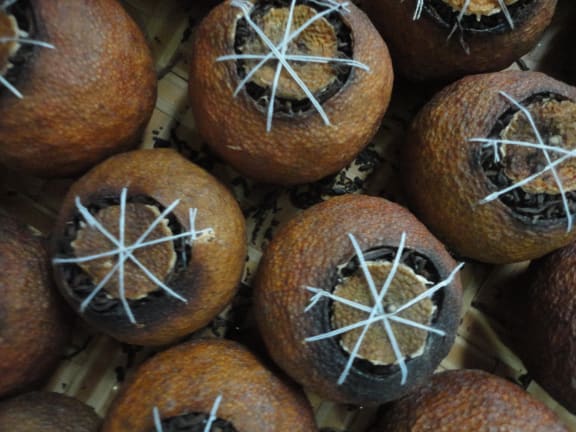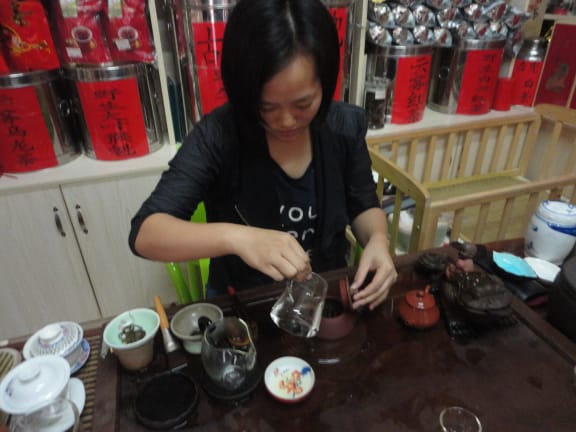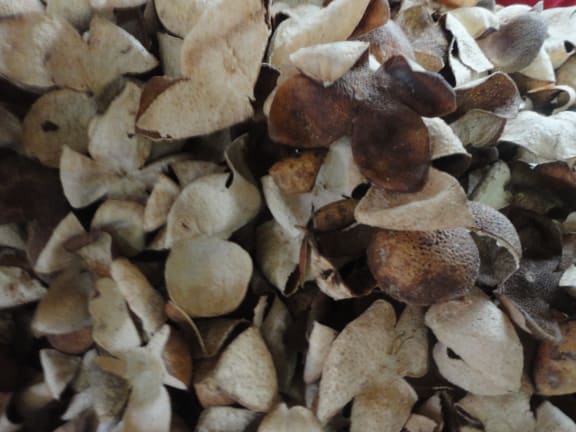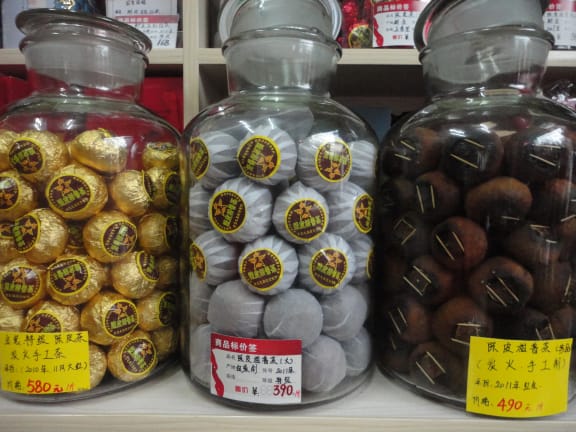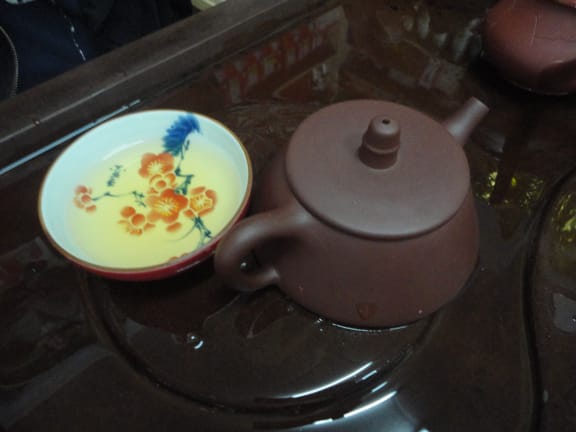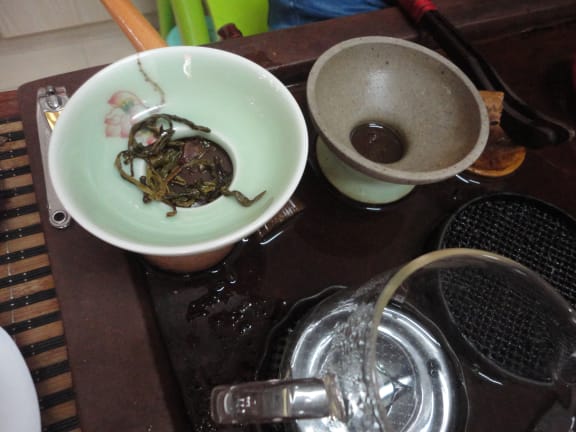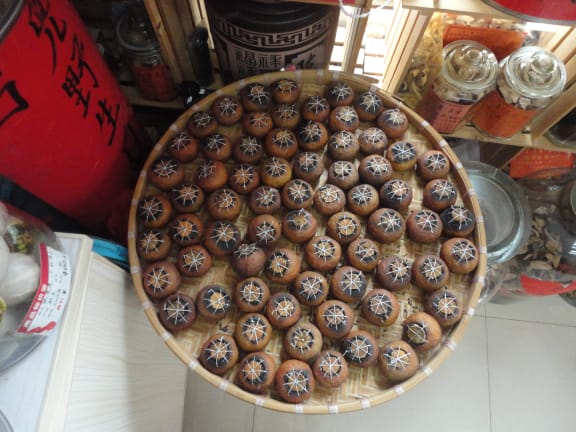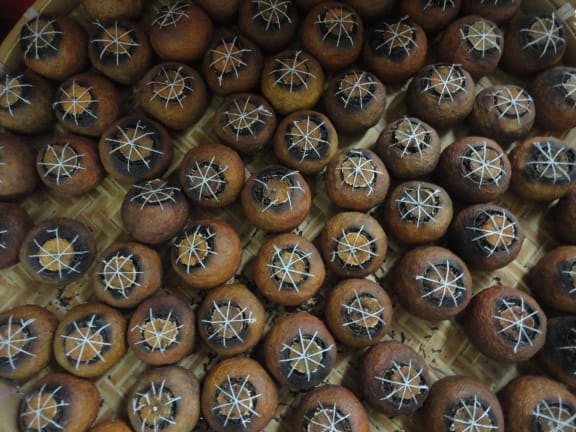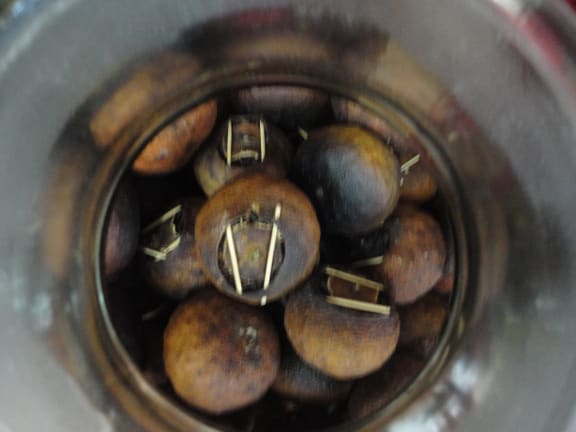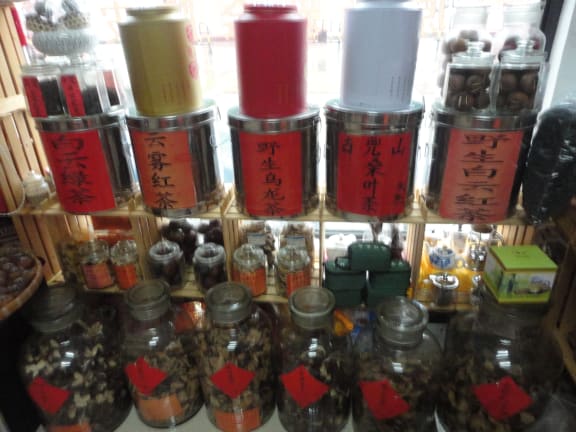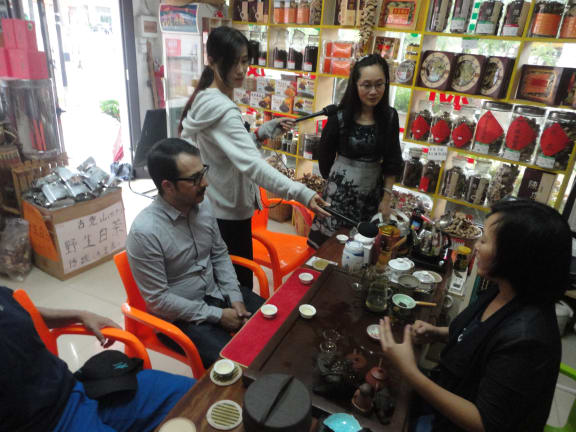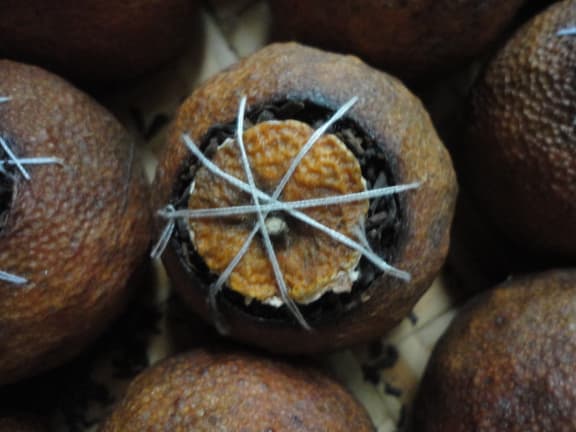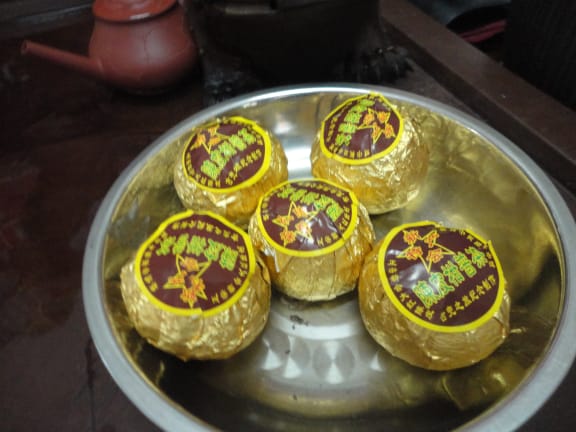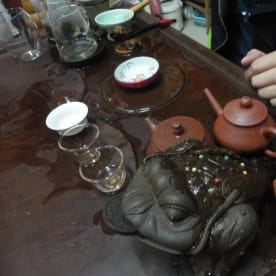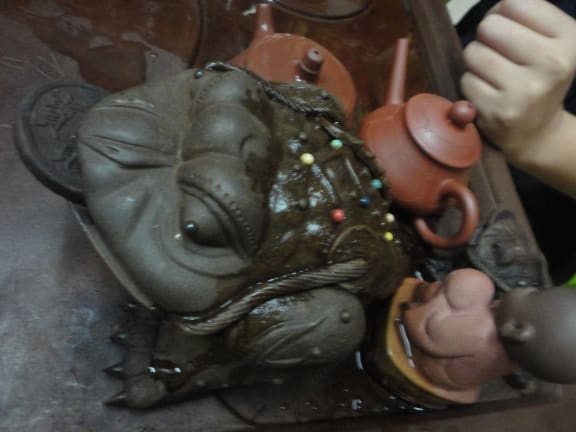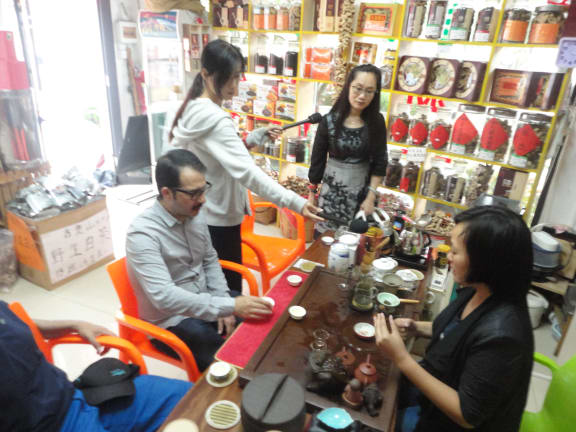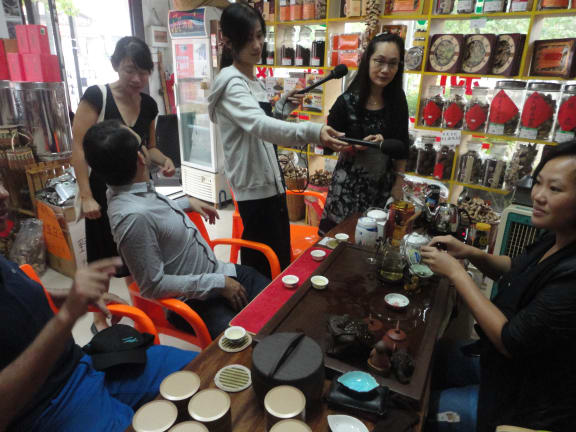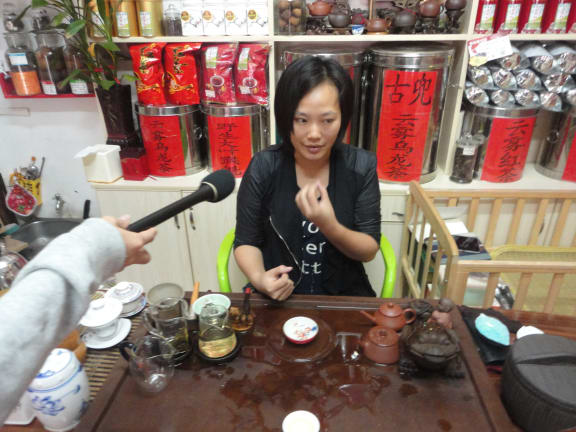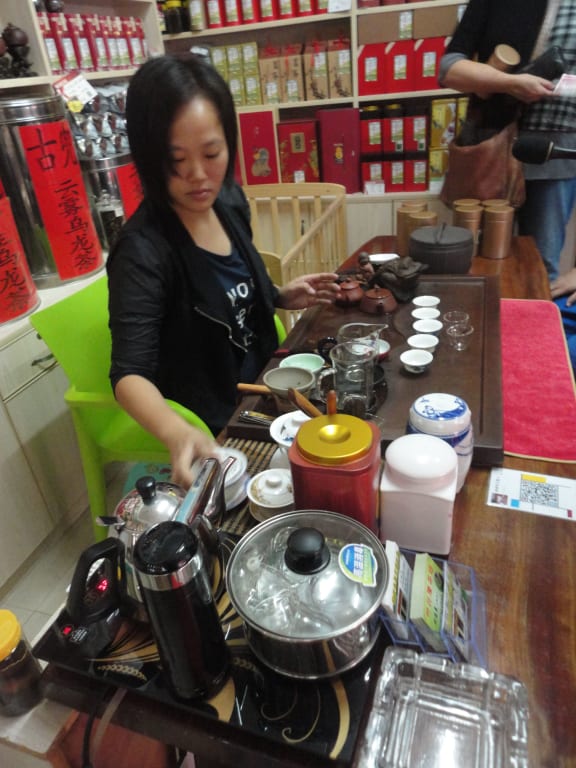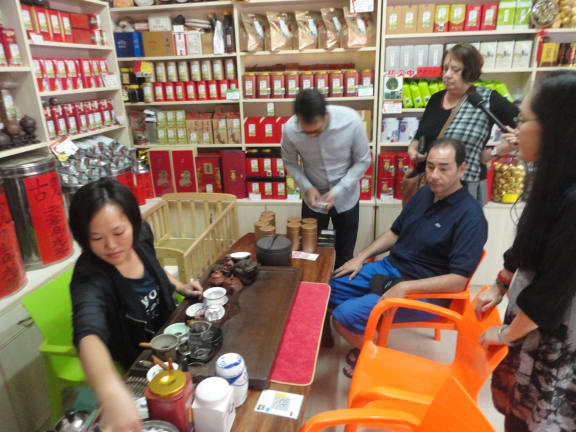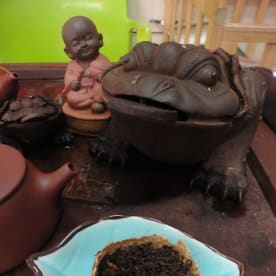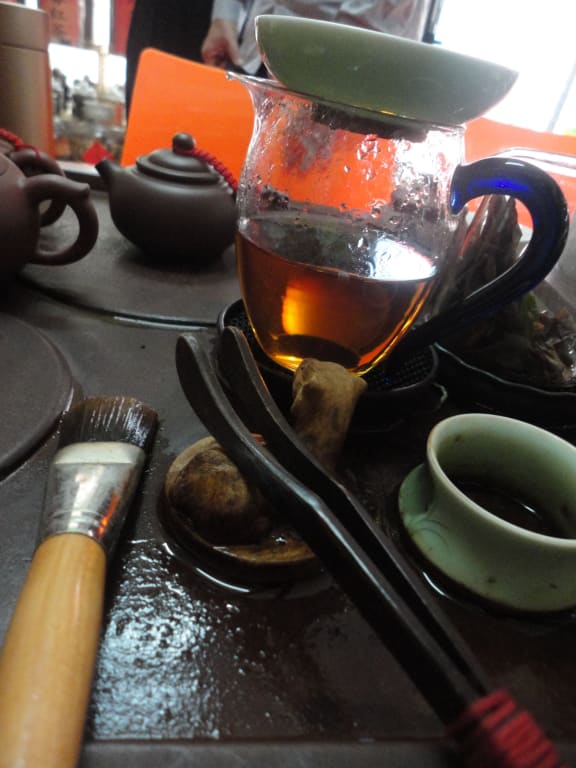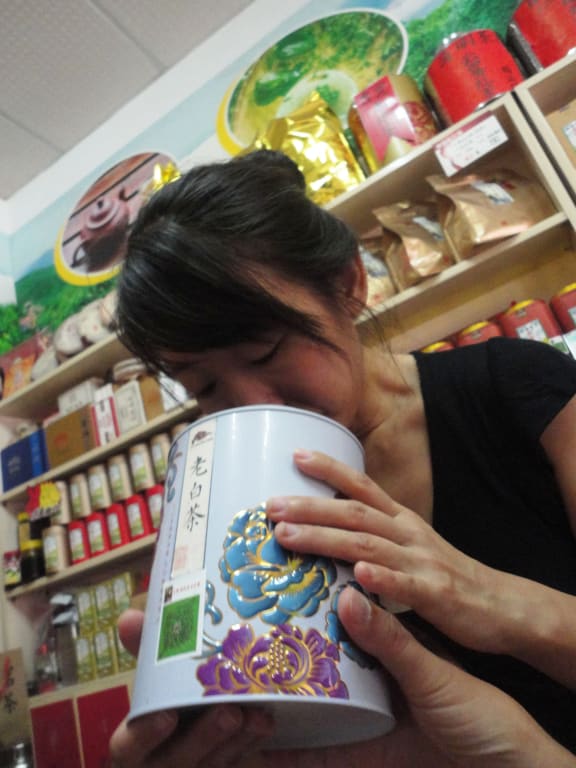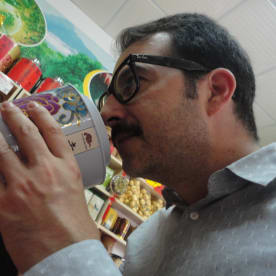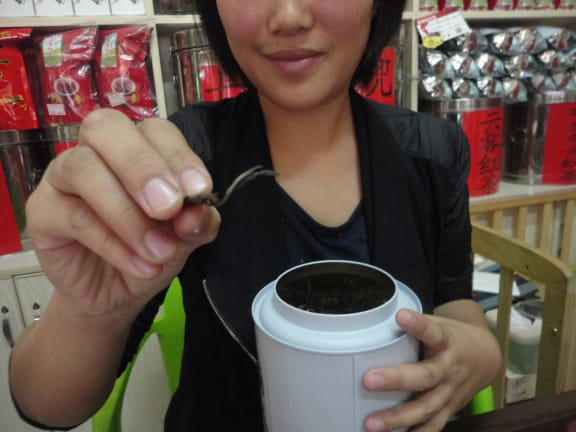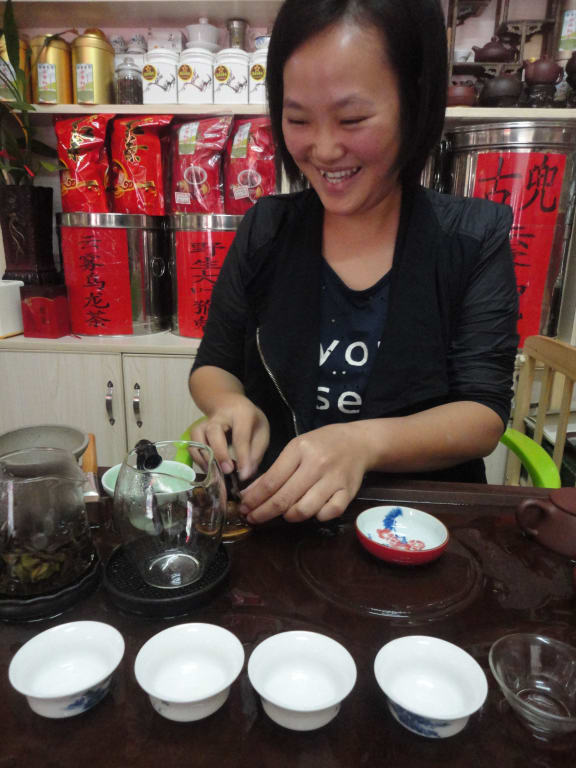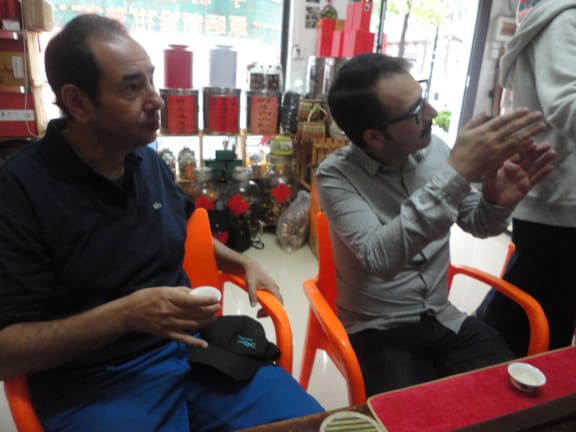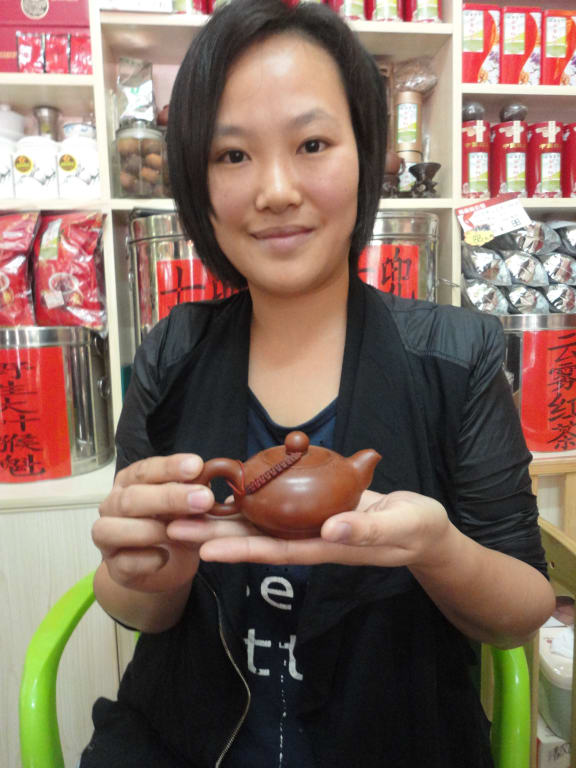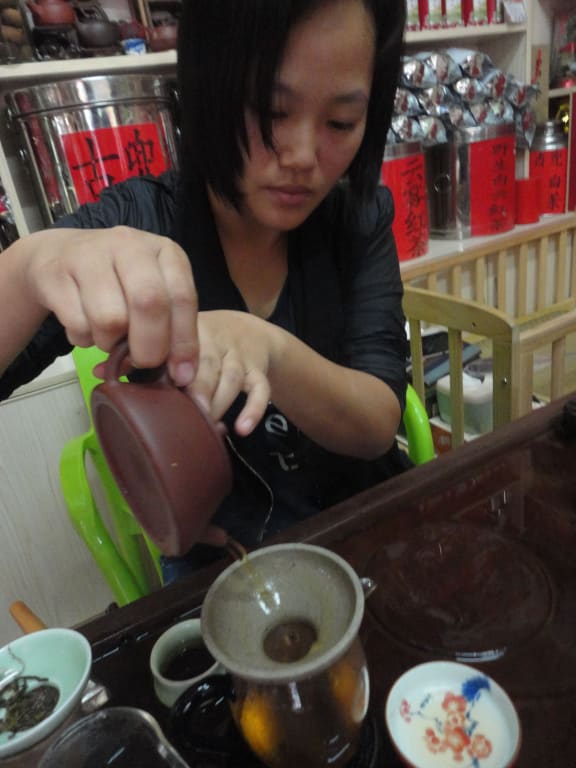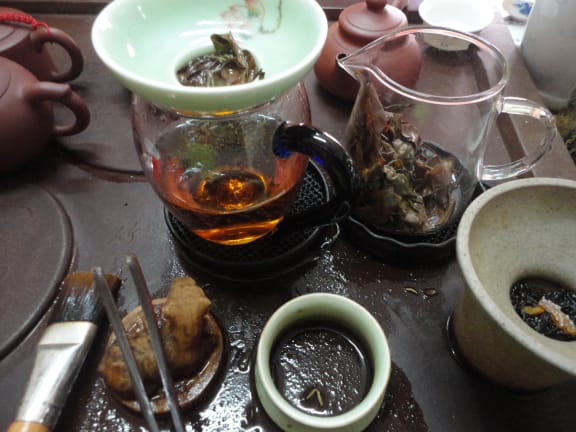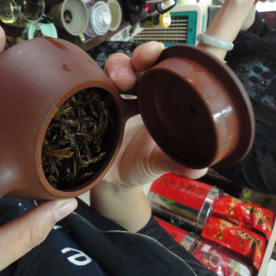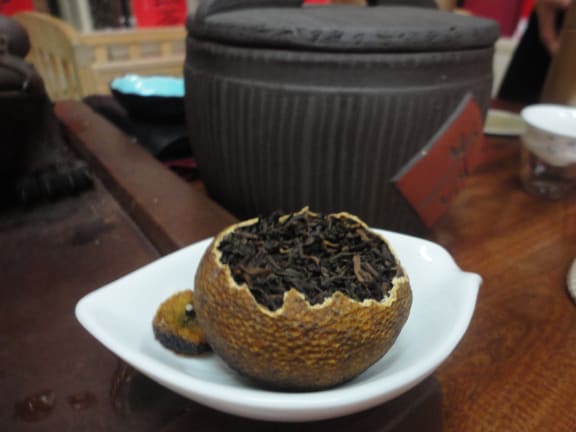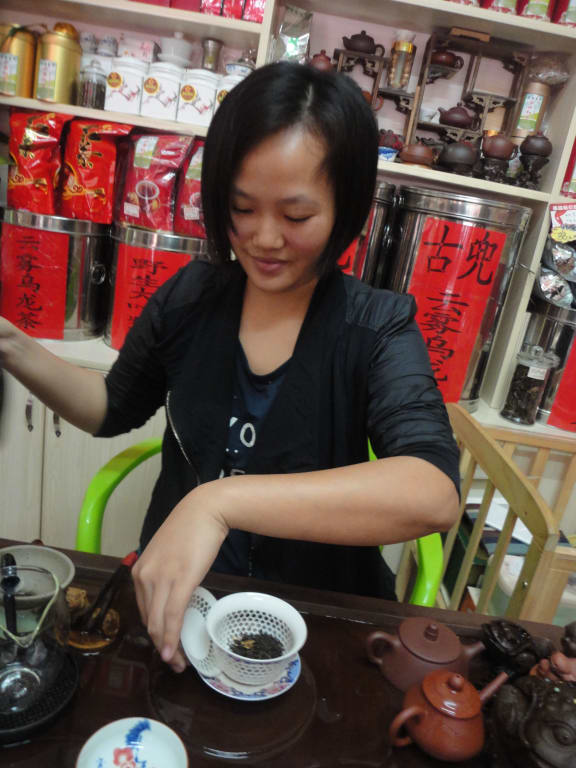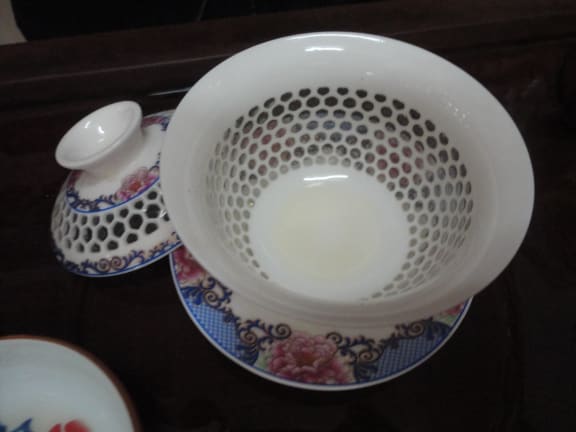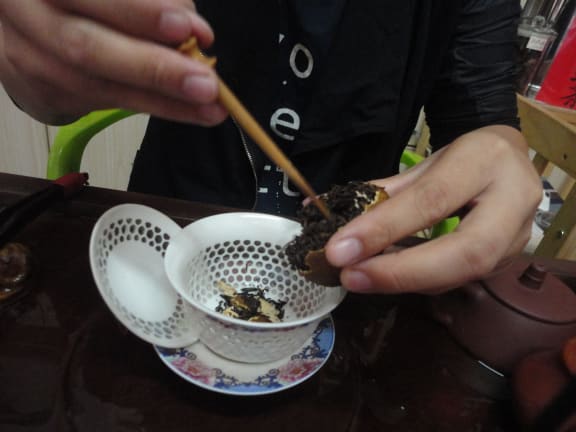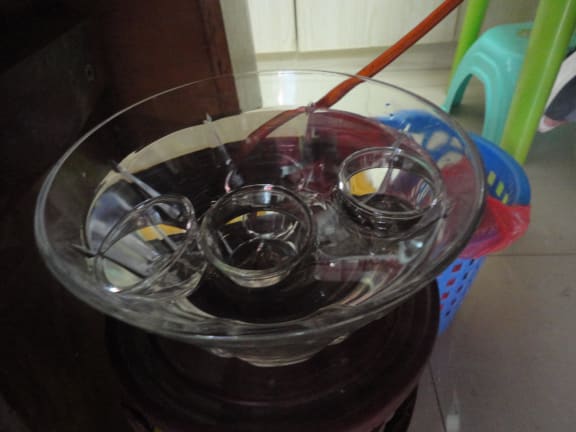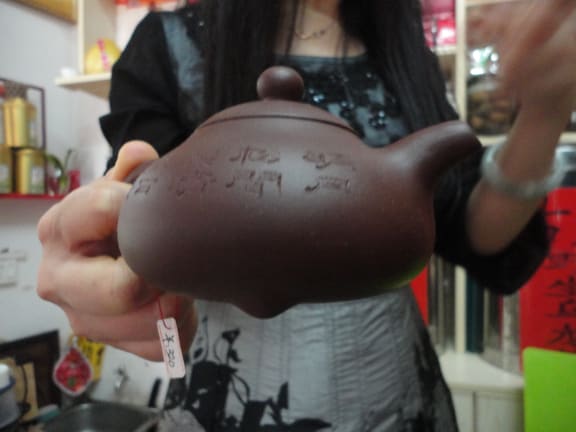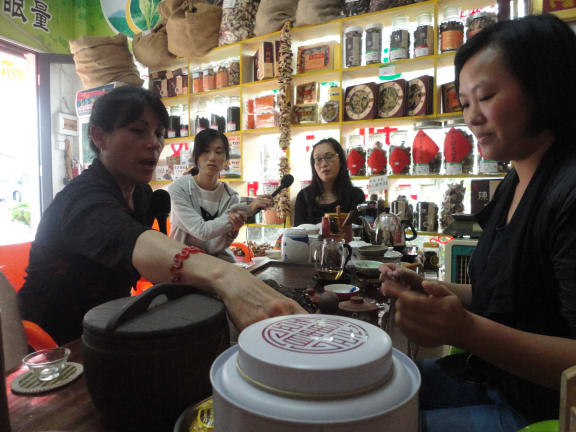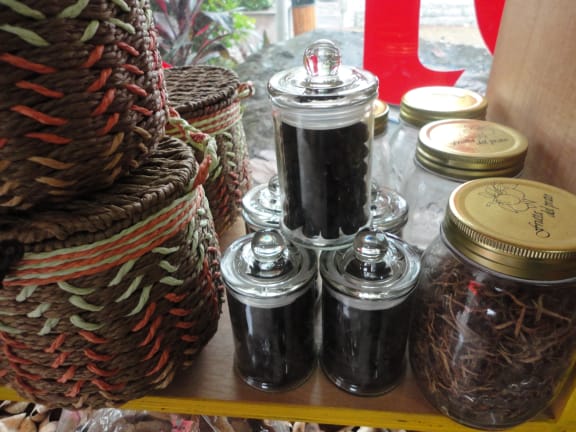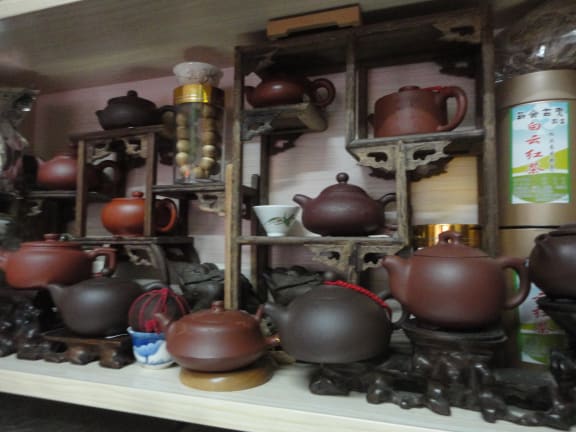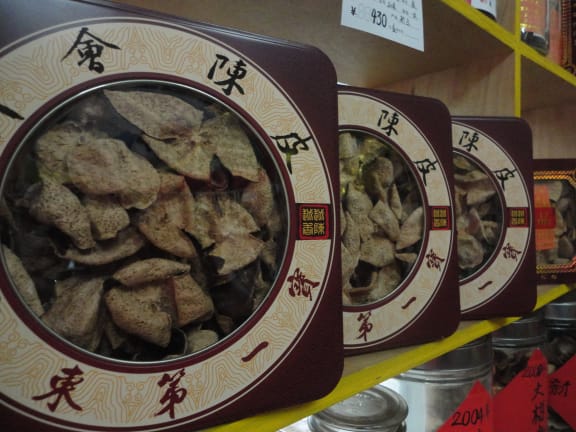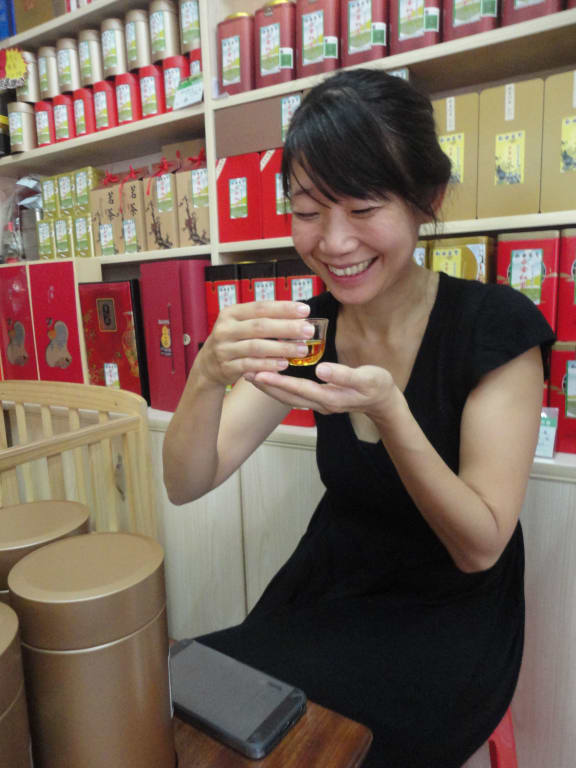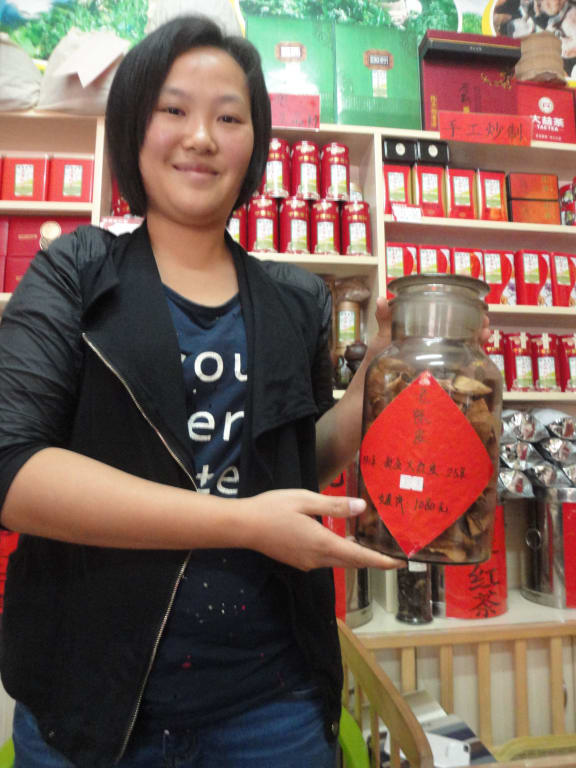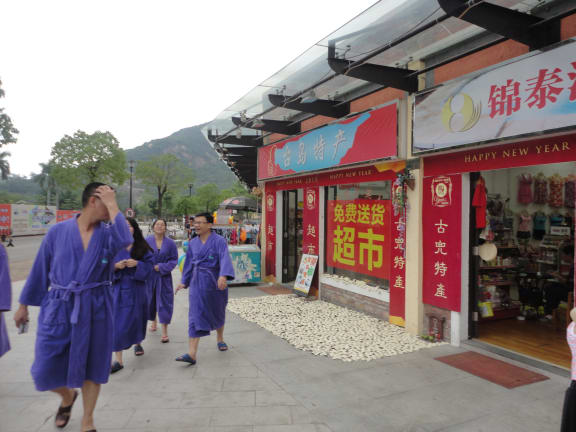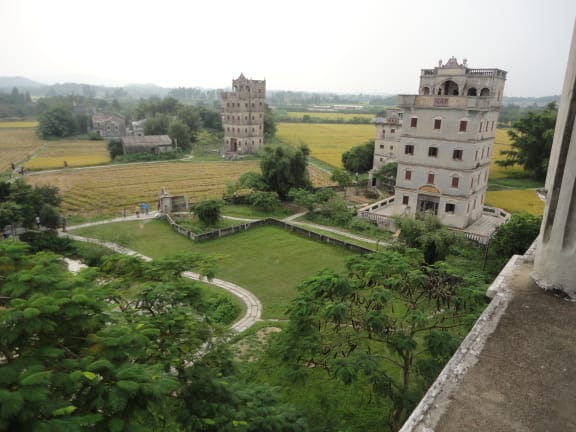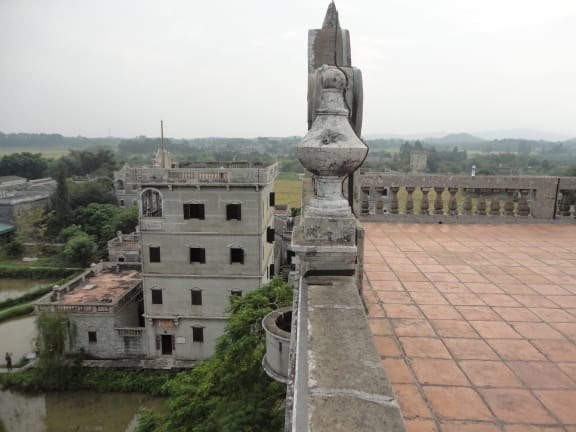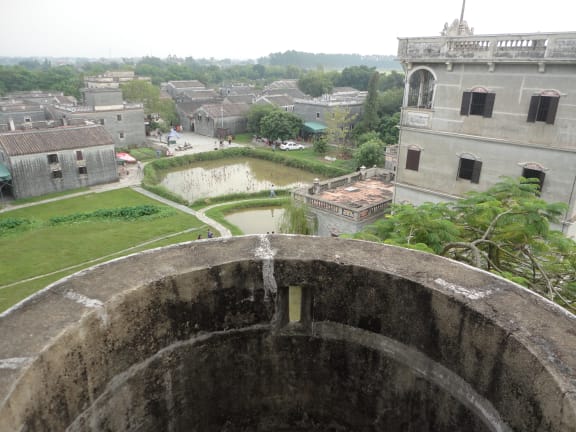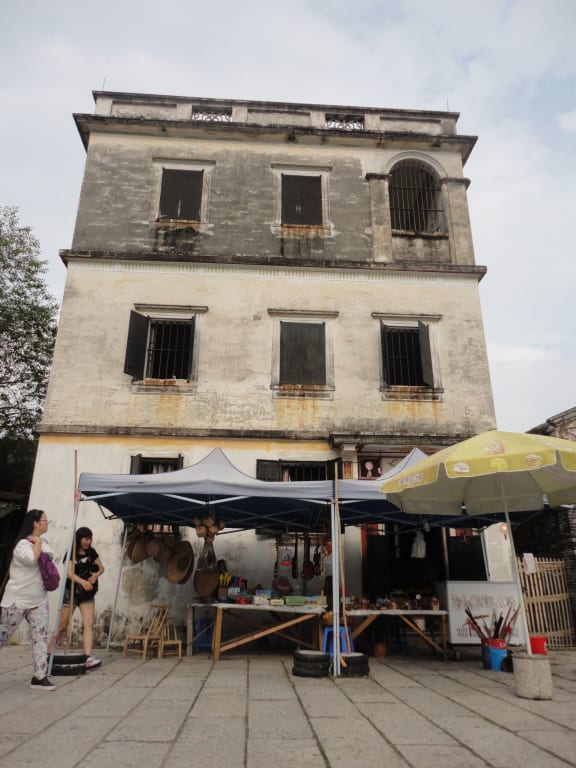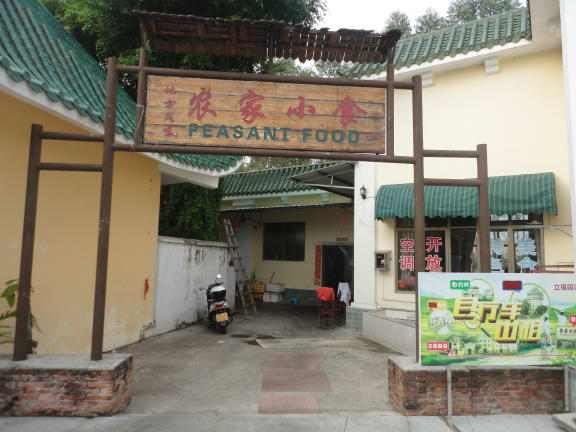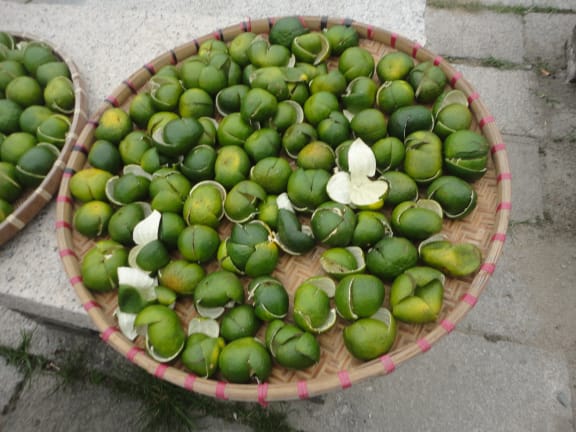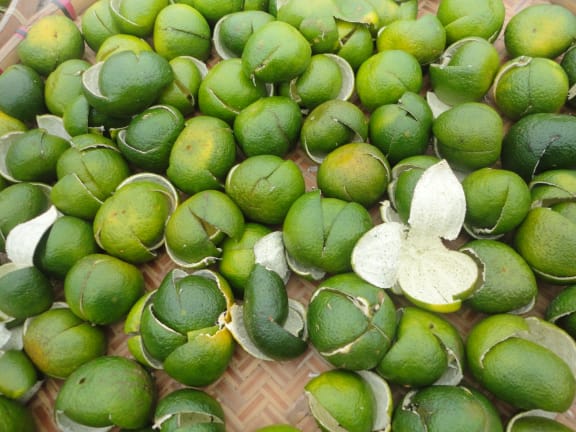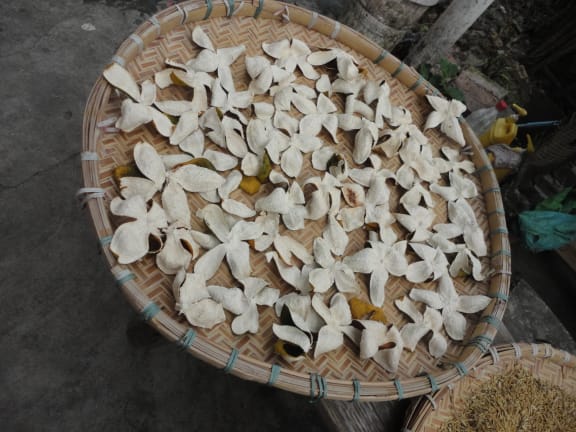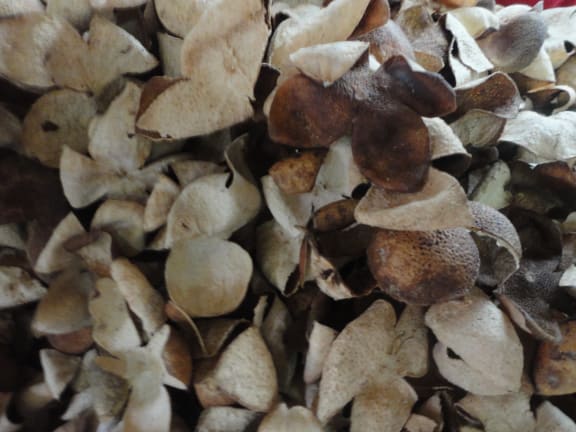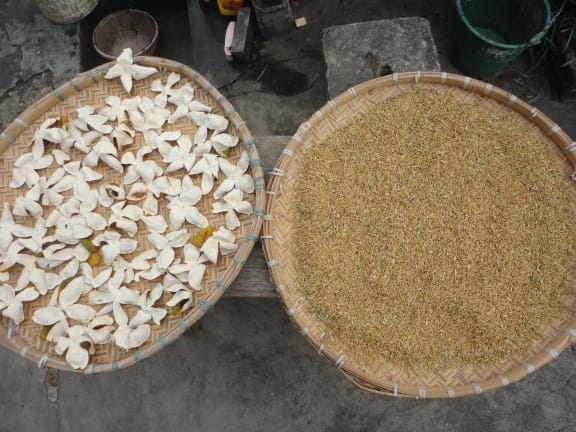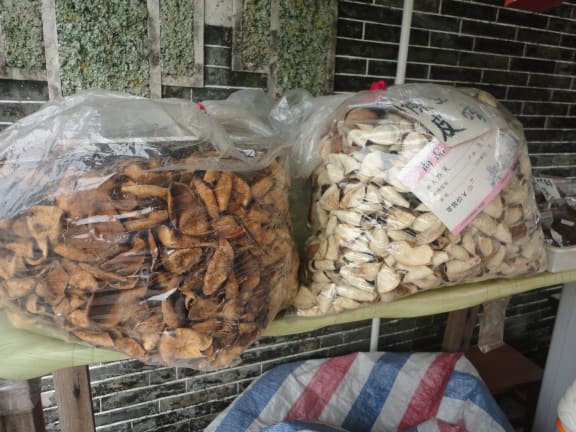I’m in my mother’s homeland, Southern China to participate in an international writer’s residency at Sun Yat-sen University, Guangzhou with a group of 12 international writers from around the globe. We're staying in Gudou, Jiangmen, a region famous for its UNESCO world heritage site of historic diaolou or watchtowers, its hot springs and its tea making.
Around six of us are gathered in a tiny, but famous, tea shop in Gudou. Residency organiser Professor Fan Dai translates as Chin Soo Hwa or Ah-hwa - the proprietor explains how tea making has been part of her family for generations.
Gudou is Ah-Hwa’s hometown. In the old days tea making was contained to a neighborhood cottage industry. For Ah-Hwa’s family their tea continues to be organic grown and handmade – however now it’s commercialised their tea has become so popular they can’t keep up with demand.
One of the three tea making masters in their business is Ah-Hwa's husband. She explains that he is attending to their tea growing sites in the rural areas of Gudou.
The tea ceremony itself is an ancient art. Egyptian writer Khaled Khamissi, Mexican writer Roberto Frias and Canadian writer Madeleine Thien are observing and tasting as Ah-Hwa busily prepares pot after pot of fragrant tea for us.
Each tea tasting is done with clean cups and a new teapot with multiple pourings of boiling water over the pot and cups. The taste changes according to how long the leaves are steeped, so the first taste will be sweeter, middle tasting will be bitter or stronger before there is sweetness on the palate again.
Ah-Hwa tells us that the temperature needs to be over 90 degrees centigrade, keeping a stable heat so that the tea is not over-boiled or under heated. If the tea leaves are of a good quality then it doesn’t matter how long it is steeped in the pot because the taste should be great anyway.
She starts with green, black, white and oolong tea as well as the most expensive and famous specialty of the area; mandarin-peel tea.
The inside of the tangerine or mandarin is excavated and the peel is dried, in some cases for up to 25 years. Like a great vintage of wine the longer the aging; the more expensive the peel.
The dried peels are housed in enormous sacks and displayed in large glass jars which line the walls and windows of Ah-Hwa's tiny shop. One batch of dried peel is even older than Professor Dai’s post-graduate student Jian-min, my assistant during the recording of this story.
The dried peels are then reconstructed around a handful of the best quality tea leaves and hand-sewn into the shape of a mandarin once again. These dried mandarin tea creations are then individually wrapped in gold foil proudly displaying the label of the tea-house and family growers.
I'm looking at the prices of these small gold packages, the ones I will purchase sell for around 25 Chinese Yuan or RMB each. That's around NZ$5.70 per mandarin.
Up on the top shelf sit glass jars of the very best vintages. The best mandarin-peel tea may now sell for around 1,008 Chinese Yuan (or RMB) per 500ml container of the small gold packages - that's around NZ$245.00 each. Some aged vintages of mandarin peel tea even sell for thousands of RMB by the weight.
Ah-Hwa tells us that some aged teas are not even for sale, so we are very lucky to be sampling their best that day.
Demand is so great now their business is looking at expanding to the international trade.
We're told that white tea has the best nutritional value. It's good for colds and other ailments, pure and unprocessed white tea is simply the organic leaves themselves - in some cases not even dried.
Khaled Khamissi is curious about the delicately carved little brown tea pots and cups themselves. These are all hand crafted out of local clay and an arts industry in their own right.
Ah-Hwa delights the group when she explains that a valuable teapot may be raised within a family almost like a child, that is that it is cherished and used only for one type of tea. Eventually, the pot becomes seasoned for the for the taste of that tea leaf alone. The beloved little teapot will stay with the family for a very long time.
Like generations before, Ah-Hwa and her family of master tea makers are like the little packages they sell; uniquely precious and worth their weight in gold.
